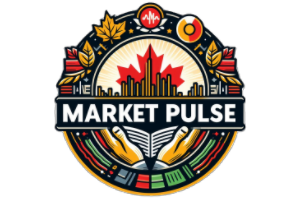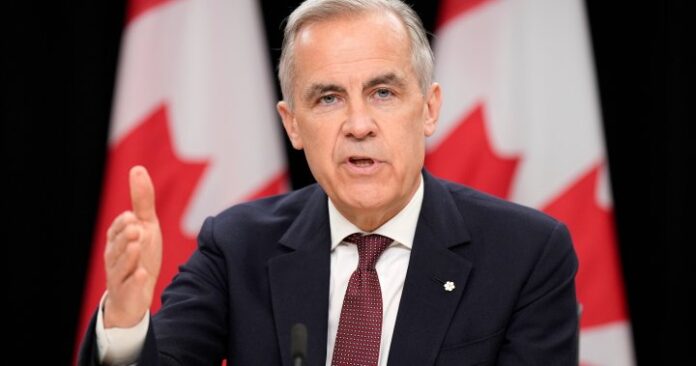The clock is ticking on one of Prime Minister Mark Carney’s signature promises — removing interprovincial trade barriers and making it easier for Canadians to trade with each other.
In his first post-election press conference on Friday, Carney reiterated his commitment to dismantle trade barriers by Canada Day. On Wednesday, Carney met with Canada’s premiers to brief them on his meeting with U.S. President Donald Trump and discuss ending interprovincial trade restrictions.
But experts say Carney is facing a tall order.
“The rules and regulations that are those interprovincial barriers that he wants to remove are not entirely within his control. He can’t compel provinces to remove their barriers,” Moshe Lander, economist at Concordia University, said.

The 2024 fall economic statement said Canada could increase its GDP per capita by as much as 4 per cent — or $2,900 per capita — if it knocked down internal trade barriers.
“He (Carney) intends to introduce legislation by July 1. That legislation will look at everything from recognition of credentials (across provinces), trying to reduce those barriers, and even the idea of impact assessments (for large projects),” Darby said.
For some sectors, like alcohol, overcoming trade barriers will take more than just federal legislation.
Michelle Wasylyshen, president and CEO of Ontario Craft Wineries, said some of her organization’s members find it easier to sell Ontario wine to international markets like Japan compared to selling across the Ottawa River in Quebec. And it all comes down to what rules the provinces have.
“Federal restrictions can come down in a heartbeat. It’s the provincial beverage alcohol regulations that need to change in order to create a more conducive cross border dynamic. Specifically, technical barriers and mark-up structures make it difficult to sell wines into other provinces,” she said.

Get daily National news
Get the day’s top news, political, economic, and current affairs headlines, delivered to your inbox once a day.
“For example, if my member wishes to sell into Nova Scotia, their mark-up structure is so high that there is no incentive to do so. Ditto for other provincial markets. For example, the SAQ’s mark-up structure is 25 per cent higher than the LCBO’s,” Wasylyshen added.
She said some provinces, like B.C., see Ontario wine makers as competitors.
Lander said this kind of protectionist push is what gave rise to trade barriers.
“When those interprovincial barriers were created, there were vested interests that were arguing for them to be put in place. There are going to be people who jump up and make the news cycle, saying the removal of this barrier has cost me my job or has cost me my way of life,” he said.

What are internal trade barriers?
A product made in one Canadian province faces several hurdles before it can be sold in another province. This net of rules that regulates this trade across provincial lines is collectively referred to as interprovincial trade barriers.
It’s not just goods and services. It also applies to a person who works in a regulated profession that needs a licence, like a person who works in the trades or as a massage therapist or even a hairdresser. If such a person wants to move to work in another province, they would have to go through the entire process of getting their licence.
Most trade barriers have to do with red tape and regulations, which probably means you’d have to pay a higher mark-up on a bottle of wine from another province or your provincial liquor board may not even stock alcohol from provinces it considers a threat to its own industry.
Canada’s uneven transportation policy can also come in the way of trading with other provinces. Different provinces have different maximum weight requirements or safety requirements for trucks, which makes it difficult to transport goods across the country by road.
“Each of the provinces has rules regarding when trucks can be on the road, what kind of tires they have or what kind safety kits they have,” Dennis Darby, president and CEO of Canadian Manufacturers and Exporters, said.
Darby said the last four months have seen unprecedented momentum in the move to end trade barriers within Canada, which might be the push the provinces need to get on board. And he says the consensus seems to be building because of one crisis alone — Donald Trump’s trade war against Canada.
“With that existential threat of the U.S. and the threat to our ability to trade, what better time to look at ways to be able to move all those things and all those people and all the products across Canada?” he said.
Some provinces have already started moving. In February, Nova Scotia introduced a bill to remove barriers to trading with other provinces. In April, Ontario and Prince Edward Island followed suit.
Wineries in B.C. can now directly ship wine to customers in Alberta, the result of an interprovincial deal that was agreed to last year.
The process allows Albertans to order wine from more than 300 B.C. wineries in exchange for the Alberta government getting its share of applicable taxes.
Wasylyshen said the next step should be to go beyond direct-to-customer sales and allow wine makers to sell to businesses as well.
“Restaurants are now looking to get Ontario (wine) products onto their menus. Because consumers are asking for them,” she said.
Lander said while changing regulations in all 10 provinces and three territories will be a long process, the federal government could get them all to agree to something called a “mutual recognition” program.
Mutual recognition means while provinces will continue to have their own set of rules, they will recognize and respect each other’s standards.
“So, if a truck was approved in B.C. as being able to drive on its highways, then Alberta should maybe recognize that (and say) OK, it’s safe to drive on our highways,” he said.
Darby said a good analogy for a mutual recognition was drivers’ licences. Every province issues its own, but you can use an Ontario licence to drive in the United States.
He said a federal mutual recognition program could also work for people in the licensed trades who want to work in another province.
“If you’re qualified to repair a compressor or to do welding on a high-pressure vessel in Quebec or Ontario, that should suffice in Alberta or Saskatchewan,” he said.
Lander said removing internal trade barriers will not offset the losses from protracted tariffs from the U.S. tariffs.
“There is no substitute for having unfettered access to the U.S. economy,” he said.
“What it allows us to do is withstand the tariff war a little longer than we otherwise would. If that buys us an extra six months, if it buys us an extra year because we have a little bit more of a cushion, then that’s great. In terms of negotiation, we’re not as weak as we otherwise would be.”



